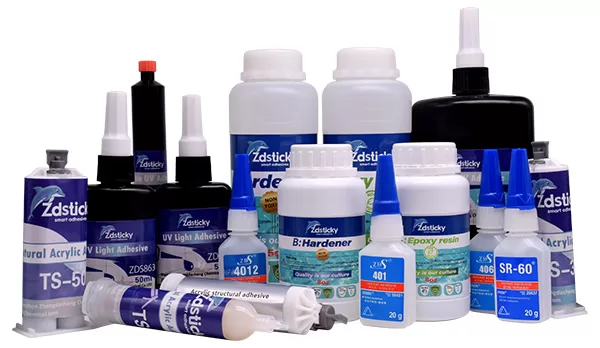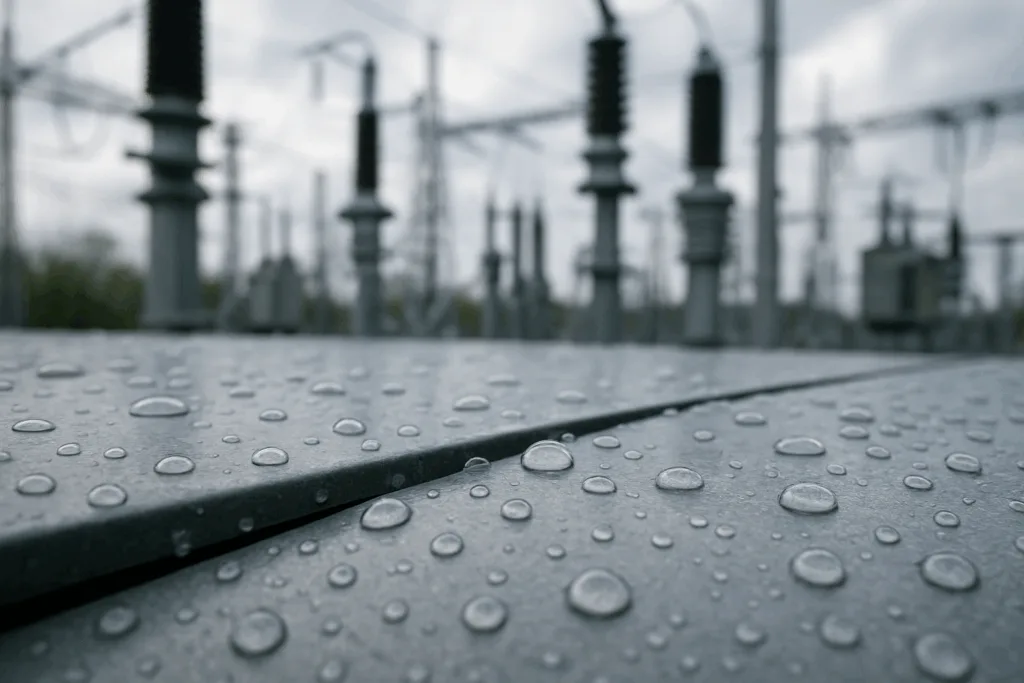Industrial Adhesive Comparison: Epoxy vs Silicone vs Polyurethane
Industrial projects demand adhesives that hold under stress, heat, and environmental exposure. Choosing between epoxy, silicone, and polyurethane can impact product performance, longevity, and cost. Understanding their differences in structural strength, temperature resistance, and curing helps engineers make the right choice.
Understanding Industrial Adhesive Chemistry

Each adhesive type—epoxy, silicone, polyurethane—brings unique chemical properties. Their molecular structures define how they cure, bond, and age. Engineers should match adhesive chemistry to specific project requirements. ZDS specializes in supplying these adhesives, guiding clients by substrate, environment, and regulatory demand.
Epoxy Adhesives: Two-Component Strength
Epoxy adhesives typically come as two-part systems: resin and hardener. When mixed, they cure to form a rigid, high-strength bond. Epoxies excel at structural bonding thanks to their high lap-shear and tensile values, often exceeding 20 MPa. Their bond performs well on metals, composites, ceramics, and some plastics (with surface prep or primers).
Silicone Adhesives: Flexibility and Resistance
Silicone adhesives set apart with their flexibility and excellent resistance to extreme temperatures (from -50°C up to 230°C). They cure at room temperature (RTV) or with heat, producing rubbery bonds with high elongation. Silicone handles thermal expansion and movement but lacks the structural strength of epoxies.
Polyurethane Adhesives: Versatile and Durable Bonds
Polyurethane adhesives, or PUs, offer a balance between toughness and flexibility. They adhere strongly to varied substrates—including plastics, glass, metal, and wood. PUs can absorb shocks and handle dynamic loads, making them ideal for assemblies needing both durability and some movement tolerance.
Key Performance Differences
To choose wisely, engineers must weigh structural strength, temperature resistance, and curing methods. Below is a comparative overview:
| Property | Epoxy | Silicone | Polyurethane |
|---|---|---|---|
| Chemistry | Epoxy resin + hardener (2K) | Polysiloxane (1K/2K) | Isocyanate + polyol (1K/2K) |
| Structural Strength | High (lap-shear 10–30 MPa) | Low (lap-shear 1–2 MPa) | Medium (lap-shear 5–15 MPa) |
| Temperature Resistance | -40°C to 150°C (up to 200°C for some) | -50°C to 230°C+ | -40°C to 100°C (up to 120°C) |
| Flexibility | Low–medium | Very high | Medium–high |
| Curing Method | Ambient/heat (2K, 1K heat) | RTV, moisture, heat | Moisture, ambient, heat |
| Cure Time | 5 mins–24 hrs | Minutes–24 hrs | 30 mins–24 hrs |
| Chemical Resistance | Excellent | Outstanding | Good |
| UV Resistance | Fair–good (yellows) | Excellent | Good (yellowing) |
| Best Uses | Structural bonding, electronics, metals, composites | Sealing, gasketing, electronics, glass, plastics | Automotive, construction, panels, plastics, vibration |
Epoxy vs Silicone vs Polyurethane: Which Industrial Adhesive to Choose?
“Epoxy vs silicone vs polyurethane” is a common debate in manufacturing. For high-strength joints and structural bonds where rigidity matters, epoxy dominates. If movement, flexibility, or high-temperature exposure are priorities, silicone is the front-runner. When shock absorption and versatility are needed, polyurethane offers a reliable middle ground.
- Epoxy: Best for permanent, load-bearing bonds or when bonding metals, stone, or composites under precise tolerances.
- Silicone: Go-to for sealing or bonding where thermal cycling or extreme temperatures apply, or where substrates expand and contract.
- Polyurethane: Suits automotive and construction where panels move, vibration is a factor, and durability is required.
Expert tip: Always test on real parts. Adjust surface prep and cure cycles for optimal results—one-size never fits all in industrial bonding.
Structural Strength: Head-to-Head
Epoxies are the industry standard for structural strength. In ASTM D1002 lap-shear tests, high-grade epoxies reach 20–30 MPa, holding heavy loads with minimal creep. In contrast, silicones rarely exceed 2 MPa. Polyurethanes land in the middle; grades used in vehicle assembly often achieve 8–12 MPa, with enough flexibility to absorb impact and reduce joint stress.
Testing and Quality Control
Leading suppliers like ZDS validate adhesive batches through rigorous lab routines. These include salt spray (ASTM B117), T-peel (ASTM D1876), and aging trials. Proper documentation and batch traceability reduce risk and improve uptime for factories.
Temperature Resistance and Environmental Durability
Silicone’s ability to endure freezing cold and continuous oven heat makes it a top pick for electronics, appliances, or exterior panels. Epoxies compete where temperature stays below 150°C, with specialty formulas stretching to 200°C. Polyurethanes handle moderate heat and excel outdoors, thanks to good weather resistance and adhesion to flexible substrates—but can yellow in UV.
- Choose silicone for repeated thermal cycling, ovens, or cold exposure.
- Use epoxy for assemblies near engines, brakes, or heated machinery.
- Select polyurethane for building panels, automotive interiors, or construction joints.
Curing Methods: Speed, Flexibility, and Process Fit
Epoxies offer both fast-set (minutes) and slow-cure (hours) versions, balancing open time for assembly and fixture speed. Two-component epoxies use static mixers or automated lines for consistency. Silicone’s room temperature vulcanizing (RTV) variants are popular for flexible seals, while heat-cured options create even stronger bonds. Polyurethanes cure via moisture or heat; one-component PUs are gun-grade and ideal for construction, while two-component types deliver faster throughput in automated lines.
Surface Preparation and Substrate Compatibility
Substrate cleaning is key for all adhesives. Metals should be degreased and, for best performance, grit-blasted or abraded. Plastics, such as polyethylene (PE) or polypropylene (PP), often require corona, plasma, or primer treatment for reliable bonding. ZDS assists customers in optimizing prep for different materials.
Application Scenarios: Real-World Guidance
The ideal adhesive depends on the application scale and environment. For example:
- Automotive: Polyurethane seams and flexible joints, with epoxy fixings for brackets and metal assemblies. Silicone for lighting and exterior trims.
- Electronics: Silicone protects PCBs from vibration and thermal shock. Epoxy secures heatsinks or encapsulates chips.
- Construction: Polyurethane for expansion joints and weatherproofing. Epoxy for anchoring, stone, or rebar connections.
- Industrial Assembly: Epoxy in load-bearing machinery; silicone to seal housings; PU where impact and noise dampening are needed.
Regulatory, QC, and Compliance Considerations
Projects in automotive, construction, and electronics must meet regulations like REACH, RoHS, and VOC limits. Epoxies and polyurethanes may emit volatile organic compounds (VOCs), while modern silicones are often low-VOC. Full compliance documentation and ISO 9001 traceability streamline audits and protect end-users. Choose adhesive partners who supply thorough SDS and test reports on request.
Selecting Your Industrial Adhesive: Decision Checklist
Use this short checklist to match adhesive to project needs:
- Need high, rigid strength? Choose epoxy.
- Require flexibility, UV, or temperature resistance? Choose silicone.
- Need shock absorption and versatile adhesion? Choose polyurethane.
- Always confirm surface compatibility and environmental compliance before final selection.
- Request lab samples, technical data sheets (TDS), and pre-production trials from your supplier—ZDS can assist every step.
Frequently Asked Questions
What is the main difference between epoxy, silicone, and polyurethane adhesives?
Epoxy offers the highest structural strength, silicone provides top flexibility and temperature tolerance, while polyurethane balances strength and movement.
Which adhesive should I use for bonding metals?
Epoxy is usually best for metals due to its excellent strength and durability, especially when surface preparation is thorough and precise.
Can silicone adhesives be used for load-bearing or structural applications?
Silicone adhesives suit flexible sealing or gasketing but are not suitable for structural load-bearing applications because of low lap-shear strength.
How do temperature extremes affect adhesive selection?
Silicone handles the widest temperature range, while epoxies manage up to 150–200°C; polyurethanes are best for moderate temps and outdoor use.
What substrates require surface treatment before adhesive application?
Plastics like PE, PP, and some composites need primers or plasma/corona treatment. Metals and glass should be degreased and abraded for best results.
How do I verify if my adhesive meets regulations like REACH or RoHS?
Request regulatory certifications and safety data sheets from your supplier. ZDS provides full documentation and QC validation to support compliance.










